[Tom Zinnen, Outreach Specialist, Biotechnology Center, University of Wisconsin-Madison]
Welcome, everyone, Wednesday Nite at The Lab. I’m Tom Zinnen. I word here at the UW-Madison Biotechnology Center. I also work for UW-Extension Cooperative Extension and on behalf of those folks and our other co-organizers, Wisconsin Public Television, the Wisconsin Alumni Association, and UW-Madison Science Alliance, thanks again for coming to Wednesday Nite at The Lab. We do this every Wednesday night, 50 times a year.
Tonight, it’s my pleasure to introduce to you Paul Koch of the Department of Plant Pathology here at UW-Madison. He was born in Rochester, Michigan but soon thereafter moved to Grafton, Wisconsin where he went to high school. He got his undergraduate degree here at UW-Madison in horticulture and soils. He also got his masters degree here in plant pathology and his PhD here in plant pathology.
Tonight, he’s gonna be talking about something near and dear to a lot of us here in Wisconsin and that is that lovely green apron around our houses and schools and public buildings, the lawns and urban landscapes that make our place a little enjoy – more enjoyable to live in and around.
He’s gonna be talking about a greener future, Strategies for Developing Reduced-Risk Pest Management Plans for Urban Landscapes. Please join me in welcoming Paul Koch to Wednesday Nite at The Lab.
[applause]
[Paul Kock, Assistant Professor, Turfgrass Diagnostic Lab, University of Wisconsin-Madison]
All right, thank you for the introduction, Tom. This is great to be here talking with everybody here tonight about some of the research and the extension that we do in my lab.
I have a three-way split in my appointment. I have 70% Extension appointment, a 20% teaching actually and a 10% research, but just because I have a 10% research doesn’t mean 10% of the time is devoted to research. Obviously, we have a lot of research going on, but that Extension component drives a lot of what we do. A lot of the research that we do, we want to make sure that we have a direct outreach component, so I’m looking forward to talking to you all about some of the different things that – that we do in my program.
Tom told me this is a a group that likes data. Unfortunately, I’m in my third year. We don’t have a lot of data to present to you in my third year so we’ll talk some general data from EPA tests that have been done, and then we’ll get into some more – some of targeted field research, and then at the end we’ll talk about one of our Extension initiatives that we are in the process of developing.
I can’t tell if tonight’s crowd is – is truly interested in – in this topic or just will do anything to get out of watching the debate at 8 o’clock tonight.
[laughter]
[audience member]
Theres a debate?
[Paul Koch]
[laughs]
Speaking of debate though, this topic, pesticide usage in lawns, is oftentimes a controversial topic and certainly it’s very emotional to different people and what we try and do in my program is – is take the emotion out of it as much as we can and focus – focus on the science and focus on the data, so.
With that, I know, I’ve already had conversations with people in the room who just flat out don’t like turfgrass. That’s fine. I don’t have any – I dont have any personal connection to turf, but turfgrass landscapes are – do make up some of our iconic places both here on UW campus, obviously Bascom Hill, centerpiece of – of the College Game Day show, centerpiece of campus. When people, when alumni leave this campus and they come back 20, 25 years later, they probably think of two places. One is the Terrace and two is probably Bascom Hill. This is an iconic spot on campus, and you can go to 100s of college campuses around the country, around the world, you go to cities all around the world, those urban centers where turfgrass plots and urban landscapes. I don’t want to just focus on turfgrass. We’ll focus mostly on turf tonight, but urban landscapes in general, so turf, trees, flowers, all that is important for – for – for well-being.
Obviously, they play an aesthetic role but there is reams of studies that show increased mental well-being, decreased crime, increased oxygen production, decrease noise, increased cooling as it relates to parks, especially as we get into urban centers. So, we’re gonna go throughout most of this talk assuming that attractive and functional turfgrass landscapes are an important part of – of urban centers. I know everybody doesn’t quite agree with that 100%, but that’s what the – the – the beginning point that we’re going to make in the talk tonight.
What do I mean by functional? Functional means that they need to be used for something. So, I fully support, in certain environments, putting in natural systems, prairie plants, other plants like that, but for – for our purposes here tonight we’re – were looking at something that can be used by the general public.
So, obviously we have a lot of these sites around campus. In Wisconsin, Wisconsin has a – has a booming golf business as well and obviously that makes up – those are made up of – of turfgrass as well. This is a picture of Erin Hills, which next year is going to host the U. S. Open Golf Championship, which is a huge, one of the biggest golf tournaments in the world. It will be an economic engine. You’re gonna be hearing so much about it in the next year that you’re gonna be really sick of it by next June.
Then of course, we also have sites like this. Some of the most iconic sports sites in the world are made up of turfgrass here in Wisconsin. Unfortunately, the team isn’t living up to the billing as much as – as the iconic frozen tundra here at Lambeau Field, also represents some of those turfgrass landscapes and urban landscapes here in – in the state, and it’s not just the huge iconic one, right? It’s also the sports fields that – that our kids and our grandkids play soccer on, that our pets run around on and that sort of thing.
I think for the most – for most of us, though, it’s not those city parks. It’s not the golf courses and it’s not Lambeau Field or Miller Park or whatever that really are the – the sweet spots related to turfgrass. Really, it’s – its – its these sorts of pictures. So, I make two priorities whenever I give a talk. I try and provide accurate information to our clientele, and I try and get my dog in every single talk that I give.
[laughter]
So, here’s Steve hanging out in – hanging out in the backyard and I think this is what most people value their urban landscapes for the most, is having, you know, an attractive, a functional, a place where they can hang out with – with their family and certainly, we moved into our new house just a couple blocks west of Madison West High last summer and one of the reasons we bought the house is we loved – we loved the backyard, and – and obviously as you can tell here, Steve loves the backyard as well, so.
Even though these are important places to us they do carry some causes for concern related to inputs. So, I know this doesn’t play well on Wisconsin Public Television but we’re gonna play a little bit of a game here real quick. Everybody knows the association game, right?
So, Im – I’m gonna have a word come up here very shortly. I want you to all respond with the first thing that pops back in your head. Just feel free to go ahead and yell it out. Everybody ready? Everybody ready? All right, so here it comes.
[The word Pesticide comes on screen]
[audience member]
Bad.
[Paul Koch]
Bad, I think I heard poison in there. So, when I give a talk to the general public, and I’ve given something related to this talk to a lot of general public groups around the state of Wisconsin. That’s typically the first thing that pops out, some sort of toxin or poison, something that is very bad and very harmful.
But, if I give this talk or some relation of this talk to some sort of industry group, usually the first thing that pops in their head is some sort of protection. So, protection from disease, protection from a weed pest, protection from an insect pest. A lot of these pesticides are important for how they do their job whether it’s producing food, or in my case, whether it’s producing these attractive functional landscapes that – that many people demand.
With relation to pesticides, I think for the most part, most of our modern pesticides do not have a high acute toxicity. When I talk about acute toxicity, if you have a single exposure to them, you’re not going to be significantly injured. A lot of those older pesticides, we’ll talk some about some of those older pesticides that were very harmful. You have one exposure and you’d have significant neurodevelopmental damage or pass out or start vomiting. Most of those have been taken off the market, so I think the largest concern with the pesticides on the market today as far as fear from the general public is related to more chronic exposures, things like cancer development or things like neurodegenerative disorders, that – that sort of thing.
And so, one of the tests that the EPA has put into place to try and get at some of that is related to endocrine disruption. We’ll talk a little bit more about the dose making the poison in – in a few slides, but endocrine disruption is basically hormone disruption, okay? So, the endocrine system is – is analogous to the hormone system and very small perturbations in this endocrine system can – can result in very large injury to the body, both in the short term and especially in the long term.
This is especially true in – in developing organisms, so typically children have an outsized impact when their – when their endocrine system is perturbed, and this endocrine disruption was brought to wide publicity following the release of the book Our Stolen Future in 1996. Our Stolen Future did for endocrine disruption really what Silent Spring did for more general environmental chemicals back in – back in the 60s.
So, we’ll – well just kind of focus on endocrine disruption here for a – for a few more minutes. So, the Food Quality Protection Act was passed in 1996 unanimously – unanimously by the Senate, if you can believe – believe that, 100 to nothing. The Food Quality Protection Act was passed in 1996, was the largest shuffling of how pesticides are regulated in the United States since the 1970s. One aspect of that Food Quality Protection Act was that it mandated all pesticides be tested for endocrine disruption. So, that was in 1996. The testing is just been getting going in the last couple years, so it really took, you know, almost 20 years of work by toxicologists and endocrine specialist to develop the sort of testing that would be both practical and they could test chemicals at a – at a somewhat reasonable rate, and also impactful, that they could – they could make a difference by the results of – of these tests.
They – they – they listed, in 2007 or eight I believe, an initial list of chemicals, 52 chemicals. Now, these are not all pesticides. There are a lot of other environmental chemicals that are on this list, and in – just in – in June of 2015 they released the tier one results for those – that initial list of chemicals.
What do I mean by tier one result? There’s so many chemicals out there that they want to test, they want to do some sort of prioritization, okay? So, the Tier 1 test is a series of relatively cheap, relatively cheap, and relatively quick tests that they are conducting to see which are the ones that have the highest likelihood of impacting the endocrine system, okay?
They use a weight of evidence approach. What I mean by a weight of evidence approach is they have several different assays that they run on each chemical. These – these assays have particular redundancies, okay? So, there’s not just one assay they run for the endocrine system. They have, for Tier 1 they have eleven different assays they run, and multiple tests. Test for disruption to the estrogen system or estrogen pathway, excuse me. Multiple tests for disruption to the androgen pathway and the thyroid pathway, okay? So, they’re trying to not just use one test for each one because those of us in any biological system know that you can oftentimes get conflicting results, right? So, if you have just one test, one chemical might test positive for it, another chemical or that same chemical might test positive on a related test. They want to have all this different sorts of – of assays providing feedback and then using that feedback to try and give a – a – a high confidence result and if these chemicals should then – then go on to do Tier 2 testing, and then Tier 2 testing is the more stringent, more expensive, more involved testing that will get even deeper into whether some of these chemicals truly do have endocrine disruption.
The full results of all 52 chemicals – chemicals can be found on the EPA’s website. So, I’m not gonna expect everyone to remember that – that website but if you just, you know, Google EDSP, which is the abbreviation for Endocrine Disruptor Screening Program and – and Tier 1 results, it should be one of the top hits that come up, and there’s a big long sheet of pages for each one of these chemicals on that website and they can give you the full results, and there is, of course, they provide a nice little summary page so you don’t have to read all 65 pages for each individual chemical. You can just read the summary page that gives – gives some of those results.
So, I do want to touch on that weight of evidence approach again before I move into some of – just a couple of the results. So, this is the list, the full list of the Tier 1 assay results that the EPA conducts for their EDSP, the Tier 1 EDSP. Alright, some of them are very simple. This ER Binding assay, all that is is: Does a pesticide or does another environmental chemical bind with an estrogen receptor? So, they’re testing for both agonism and antagonism. An agonist would be a chemical that would bind and increase the rate of production of estrogen from this estrogen receptor. An antagonist would do just the opposite, so they want to test for both, but this ER Binding assay very simply just tests for whether the chemicals bind to the receptor. Same thing for the AR Binding assay, that’s the androgen receptor related to testosterone production, okay?
So, then we have another – then we have all these series of assays further down that are little more – there a little more what I would call endpoint based, okay? So, I’ll focus for just a minute here on the – the Hershberger assay right here. So, what that is, that is an assay that is related to the androgen receptor. It’s related to the androgen pathway and it’s not just simple – a simple receptor-based assay. What it is, though, is it’s – its an endpoint assay so they would administer whatever chemical they’re trying to test, typically to rats, and then after a certain period of time, they would harvest and weigh some of the – the organs that are related to the androgen receptor. These are typically referred to as accessory sex organs. These can be things like the ventral prostate, seminal vesicles, similar organs to that, and if they see significant changes in weight, up or down, related to their non-treated controls, then they might – that might indicate that that particular chemical is a disruptor of that particular endocrine system, okay?
So, they do all these tests. Some of them are yeses. Some of them are nos. Some of them give conflicting results, and then they take the results from all those eleven assays together and they make their final recommendation, okay? So, for some of our important or widely used chemicals in the – in the urban landscape market, one of the most important ones is 2,4-D, widely applied as a selective herbicide, right? This is the herbicide that gets rid of the dandelions in the yard but doesn’t kill the grass. The results from their tier one testing is there’s no convincing evidence of interaction with the androgen, the estrogen, or the thyroid system. They recommended no further testing as far as endocrine disruption.
This does not mean that 2,4-D does not have any toxic properties or that it’s a completely safe product; it is not. As far as endocrine disruption is concerned, though, this particular chemical does not have any concern from the EPA’s point of view.
Glyphosate, right? Round-Up: huge product, been in the news a lot lately after IARC’s characterization as probable cancer – probably causes cancer. They’re – theyre a group 2A classification. Again though, from an endocrine disruptor standpoint, no convincing evidence of interaction with androgen, estrogen, or thyroid systems, did not recommend further testing with Tier 2.
Alright.
What about Imidacloprid? This is a neonicotinoid insecticide getting a lot of press along with the other neonicotinoid insecticides because of pollinator disruption – pollinator mortality and pollinator toxicity. From – from an endocrine disruptor standpoint, though, again there’s no con-convincing evidence of interaction with androgen, estrogen or the thyroid system, did not recommend further Tier 2 testing.
Alright, so you might think: Well, theses assays just don’t work, okay? They – theyre saying everything’s fine. That’s not the case. If we go to another insecticide, Carbaryl, the brand name Sevin, this is one that did have some interaction. But it’s – its not as widespread as we might think. No convincing evidence with estrogen or thyroid pathways in mammals or wildlife, but there is evidence that there’s potential interaction with the androgen pathway in fish, alright? So, there’s some – some clear evidence that this particular chemical does have some interaction with the endocrine system especially in fish. This will be – they do recommend further Tier 2 testing with this particular chemical, okay? So, it’s on a chemical by chemical basis. This Tier 1 testing, if it – if it – if it – doesn’t have any interaction or has very low interaction, it goes through this Tier 1 testing, it does not go on to further testing. In some cases, they did have interaction with Tier 2 testing and now they’re going on further. There’s another list of chemicals that they’re in the process of testing. I haven’t seen that the results from that second list of chemicals was – was released yet.
So, you might think, then, that I think that pesticides are totally fine. This is gonna be a pro-pesticide talk and that’s – thats not what it is. I don’t think pesticides are fine. I don’t think pesticides are horrible. I think each pesticide should be judged individually. And so, theres, in – in my opinion as I’ve talked with more and more people about pesticides, there’s a bit – theres a bit of a disconnect.
So, I was at – I go to the Society of Toxicology annual meeting every year, and a couple years ago they had – they had a symposium and the symposium was titled Impact of Pesticides on Neurodegenerative Disorders. Alright, so I do – I do a lot of pesticide work. This sounds like a highly interesting symposium. So, I go to this symposium, it was a half-day symposium. There was three or four research presenting – researchers presenting extremely compelling evidence that pest – this pesticide did cause significant neurodegenerative complications, but the entire four-hour symposium was on one – one pesticide, and that one pesticide was DDT.
Now, DDT is – is an important pesticide, but it was banned in – in 1972, I think, 1972 or 1976. Now, this chemical can last in the environment for a very prolonged period of time but has not been used in the United States since – since the 1970s. So, the general public though would not, if there was a journalist at this symposium that was gonna write up an – an article for the – for the newspaper on this symposium, they certainly wouldn’t title it DDT Causes Neurodegenerative Disorders, they would title it Pesticides Cause Neurodegenerative Disorders. And so, I think that’s a little bit unfair because DDT has been around since the 1940s, product of World War II research, okay? And we know that it has horrible environmental consequences and we know that it also has significant human and mammalian toxicity as well.
So, I think the disconnect is people see any pesticide today, let’s take for example Heritage. Heritages is a fungicide that is typically sprayed a few times on a golf course in a given year. It’s also used in fruits and – and vegetable production as well. The active ingredient is azoxystrobin. This is a chemical that is – is an analog of a natural compound that’s produced by mushrooms in the environment to basically fend off other mushrooms. It’s a natural based fungicide. It has been labeled as reduced risk by the Environmental Protection Agency but when people see that Heritage is a fungicide, meaning that it’s a pesticide, you know, the initial inkling, the first, kind of, the gut response is that it’s no different than DDT, right? It’s as toxic as DDT. It’s gonna cause all the same problems that DDT caused, and in my opinion, this is – this is as – as misguided as saying that a, you know, a 1956 Buick Skylark is gonna produce the same amount of air pollution as a 2015 Toyota Prius.
Okay, we have older pesticides that are – that do have significant environmental and – and – and human toxicity problems, but we also have newer pesticides that – that don’t have a lot of those same problems. Now, I’m not saying Heritage can be sprayed everywhere and has absolutely no problems at all. It does – it does have some – some environmental concerns, but to group modern pesticides that go through some of the modern testing regimes with the ones that have been around for a long time I think doesn’t make toxicological sense and I think leads to some of these – some of these large-scale bans that we’re seeing over continents, over countries, and increasingly coming in to the United States.
So, Canada for the most part has banned synthetic pesticides on amenity turfgrasses, so mostly lawns. They have not banned them for the most part on golf courses although they are restricting pesticides, at least fungicides for the use – for their use on golf courses. Connecticut is – is a state that has banned synthetic pesticide usage on any public-school grounds, so public school playing fields, and the most recent large or high profile one was Montgomery County outside of Washington, D. C. banning all synthetic pesticide usage on lawns in Montgomery County.
Again, my point here is not that all pesticides are good or that all pesticides are bad, that there are some pesticides that are less harmful than others and we want to make sure that we’re focusing on using some of those lower impact pesticides as opposed to the older ones. So, I dont – I don’t – I dont promote the wide-scale ban of all of them. If you talk to people in Canada where this ban has been in place for a few years, they’re having difficulty maintaining the – the level of landscapes that people had come to expect up in Canada. I haven’t heard any word from Connecticut or from New York state which is another one that has a lot of pesticide bans in place on those landscapes, because those bans have just gone into – into effect in the past year or two, so we’ll – well see what the impact is moving forward.
So, this all comes back then to this, sort of, dilemma of the modern American lawn. Alright? So, if we, you know, if we look at some stats, 83% of Americans felt having a lawn is important. It’s tough to get 83% of Americans to agree on anything. This – this Harris Poll in 2015, same poll, 71% of Americans felt that maintaining a lawn helps maintain a community standard. I know I talk with people almost every day that – that do not agree with this as far as it relates to a turfgrass lawn, but there are a large majority of people in the country that do feel this.
Paul Robbins is the head of the Nelson Institute for Environmental Studies here at the University of Wisconsin. He wrote an excellent book called Lawn People. I don’t agree with everything that he wrote in the book but I do agree with a lot of what he wrote in the book, and one of the points from his book is that the majority of surveyed respondents felt that neighbor’s lawn care practices had a positive impact on neighborhood pride, right? So, a lot of that actually, you know, when you – when you delve into it, a lot of that comes back to property values, but it is a point of this, sort of, this sense of community, that we want – we want our neighborhood to – to be this sense of place and the lawn comes into that just like other parts of a house do. Right? I don’t – I dont see the lawn as necessarily anything terribly different than keeping the house painted or if the window breaks making sure that window is fixed. Okay? I think the lawn plays into the overall aspect of – of – of how the home relates to the rest of – of that community.
A couple more points from Paul Robbins’ book then, a different survey that he did in the book, he noted that people have significant anxieties about lawn chemicals, but it does little to change their behavior as it relates to chemical use. I like that term anxiety because I – I – I pick that up when I talk to people as well. People want their lawn to look nice. Okay? Most people want their lawn to look nice. That does not mean that they want – most people don’t want every single possible weed taken out of that – taken out of that lawn, but they want that lawn to look nice and it’s – its very difficult in many cases to do so through organic or no pesticide practices. The easiest and the cheapest way to do it is to typically apply some sort of synthetic pesticide. And so, they realize that these pesticides can have some – some significant environmental and – and – and human health or pet harm if applied improperly, but they still want their lawn to look nice.
So, there is this anxiety here, and they give three reasons, or Paul give three reasons in the book about why it does not change their behavior. One: they have trust in professional applicators. In many cases, this trust is valid. Most of our professional turfgrass applicators are highly – highly effective and are good – good at what they do. We do have, as in any profession, we do have some bad apples that are not – they don’t really know what they’re doing, to be perfectly honest, and – and they misapply some of these products and I think it’s important that moving forward we have some way to make sure that those who are applying chemicals improperly are – are corrected in what they’re doing.
Two: obviously, have hectic lives. There’s not a lot of time to go out there and spend time pulling weeds or going and spaying stuff ourself, you know. Tom was talking about rushing around picking up his kids from hockey practice today. And I mean everybody has a different aspect to their life that is highly hectic and if they can put the lawn care away and have somebody else do it, that helps free up time for other things.
And again, that third point, it comes back to maintaining this neighborhood norm, alright? Maintaining this – this sense of place that a lot of people feel that their lawn is an important part of in maintaining this community.
All right, so this – this, in my mind, when I – after I read Paul’s book, I thought this was – this offered up an opportunity. Okay? The opportunity was we – we start with people want to have high quality lawns, not perfect lawns, but most people want to have high quality lawns. That’s important to people, but they also want – there’s a desire to do so with a lower environmental impact. Okay? So thats, in my mind, that’s where the opportunity is. So, the title of the talk today then was how do we set up reduced-risk strategies for pest – pest management and urban lawns, and if we’re gonna talk about reducing risk we first have to define what risk is.
And so, risk is a toxicological equation. It’s the foundational principle of toxicology. I think many people have heard of the risk equation, and risk is equal to hazard times exposure. So, hazard would be analogous to toxicity, so the more toxic a compound is the higher the risk for injury is. The more exposure to a particular chemical, the higher the risk for injury is. This comes back again to where toxicology was founded, and the father of toxicology is Paracelsus. He – I think he lived in the 1500s and he came up with the statement: “Poison is in everything, and no thing is without poison. The dosage makes it either a poison or a remedy.” If we Twitter-ify that, we come down with: The dose makes the poison.
Okay? So, this is a very well-known phrase and so if we want to reduce risk then, we have to do one of two things if we’re gonna use that equation. One: we have to reduce exposure. So, these guys are doing a poor job of reducing exposure. This is – this is a picture from I believe the 1920s of Bordeaux Mixture being sprayed on a golf course, okay? Very poor job – job at minimizing exposure.
We can minimize exposure in my mind in two ways. We can spray only when we – only when we need to, and only where we need to. Those are the two easiest ways to reduce exposure, or not spray at all.
Then, the other part of that equation is the hazard part of that equation. We want to spray compounds that have a lower toxicity or a lower impact, so how do we go about doing both of those things? So, very briefly, how do we go about reducing exposure? Again, we want to spray only when we need to and only where we need to. This comes down to what we generally call Integrated Pest Management, or IPM. This is a concept that has been around for several decades. It comes, you know, gets a different name every now and then, but basically, it’s managing the plants the right way. Making the plants as healthy as possible so they are better able to fend off pests and we don’t need to spray pesticides often. Okay? So, this lawn right here has not had pesticides applied. It is a very healthy, dense lawn. This lawn is not gonna have any weeds. There’s nowhere for a weed to come in. Very unlikely that this lawn, if properly managed, will have many – many insect problems. Also, very unlikely that this lawn is going to have a lot of disease problems as well. Okay?
If we manage the lawn the right way and if we manage our plants in general if you’re talking about potatoes, if you’re talking about cranberries, apples, manage those plants the right way, you can significantly reduce the amount of pesticides that are applied. Of course though, when we’re talking about lawn care management, it’s really impossible for us to go around and talk to every single homeowner around the country and – and make sure they’re managing their lawn the right way, so that’s why pesticides, again, are usually the most effective and the most efficient and the cheapest way to manage some of these pests that come in.
The other important thing to do is – is to know the biology of the pest that you’re managing. Okay? So, if you are managing a particular insect pest, let’s say a white grub, you need to know the biology of that insect pest. So, you apply, if you are gonna use an insecticide, and pesticides are a part of Integrated Pest Management, IPM, if you are going to use an insecticide, you apply that insecticide at the proper time so it does – it does its job. The worst possible thing you can do when – when using a pesticide is to not know what you’re doing with that pesticide, apply it at the wrong time so that you put a pesticide into the environment and you haven’t done anything to control the pest. Okay? So, that’s really the worst possible thing that we can get out of this.
And then we want to make sure that we’re not having residues rub off of the lawn onto people that are enjoying the lawn, and that’s why these signs are up. These signs are up, these landscape signs are up to try and keep people off of that lawn until the pesticide, one: has dried on the leaf, and after a period of time will become what we call dislodgeable. Okay?
So, typically over a period of time the pesticide absorbs more and more into – into the leaf cells – into the leaf blade itself. And even if you roll around in it all you want, you’re just not gonna get that pesticide off there. That’s what we call a dislodgeable residue. So, within 24 hours a lot of that pesticide is dislodgeable. Within 72 hours the vast, vast, vast majority of that pesticide is dislodgeable. On home lawn landscapes, this sign needs to be kept up ’til sunset the following day, so that is typically almost always at least 24 hours. On school grounds that – that pesticide sign needs to be kept up for 72 hours.
Alright, so if we – if we – if we, sort of, implement as many of those practices as we can to limit our exposure as much as we can, that – that – that addresses the exposure part of the risk equation.
We also want to address the hazard part of the equation. This is actually a tougher thing to measure, a much tougher thing to measure. One way we can do it is we can go by the actual amount of active ingredient that we’re putting out in the environment. So, we have two insecticides here. One is Merit. The active ingredient is Imidicloprin. It is a neonicotinoids insecticide. The other one we have here is – is Acelepryn, and that’s another insecticide. Acelepryn came out in the last few years. Merit came out, ooh, I believe in the 80s or the 90s.
Merit is not a particularly acutely toxic product to mammals, has a high bee toxicity, but not a – a particularly acute mammalian toxicity rating, but it does have a much higher level of active ingredient that we’re putting in the environment in a typical application than compared to Acelepryn, right? So, Merits – the Merits formulation contains 75% active ingredient whereas the Acelepryn contains about 18%. Okay?
So, we can’t just measure a compound’s hazard by the amount of active ingredient, because getting back to that risk equation there’s both the hazard and the exposure. So, even if you put out a very small amount of the product into the environment, there still can be some hazardous component of that – that product and that’s where we get into some of these other models.
So, pesticide toxicity is very complex as we take into account leaching, impact on fish, impact on birds, all this sort of different things, and it’s difficult to, you know, sort of, calculate exactly where the – the toxicity is. So, a certain compound might be toxic to fish but not to mammals. Another compound might be a significant leacher into groundwater. Another one might – might reside up in the thatch, so it’s difficult to really give one – one description of toxicity of a compound.
There’s some of these models that try and incorporate several different factors of – of toxicity into, sort of, one number. IPM Prime out of Oregon state is one. It’s site specific so it’s not really gonna be of use to – to us in some of our work. The Pesticide Load Index is what the European Union uses to calculate the tax on pesticides, especially in Denmark. The Environmental Impact Quotient is one that was developed out of Cornell University that tries to, sort of, take account – take into account everything, and then the Hazard Quotient was developed by some weed scientist, and this focuses specifically on acute mammalian toxicity.
So, we have worked mostly with the Environmental Impact Quotient, which is EIQ, short for that, and then Hazard Quotient, which we abbreviate as HQ.
Alright, so whatever we do with any model that we use, there’s always some level of – of criticism, right? So, we were trying to find models that would – would be effective for us and we’re still always looking at new models that might provide some benefit to our operations and I kind of chuckled when I came across this tweet from Jessica Rutkoski. She’s a plant breeder from Cornell University. She put this out last spring. Models, I especially like the – the bottom quote: Remember that all models are wrong. The practical question is how wrong do they have to be to not be useful. Okay? So – so, keep this in mind as we try to use these models.
Every model that we’ve – weve been looking at has some sort of – of drawback, but I do think they do provide a use in trying to assess the level of toxicity of some of these compounds.
Alright, I told you before that we’ve – weve just been going for a couple years. We’re – were just starting to gather some preliminary data into some of our – our deeper, in-depth research and I’ll talk – Ill just touch on what some of that research is in a minute, but we have – we have gone about conducting some very quick, applied research using some of these products that we labeled as lower risk, lower toxicity products.
And if we’re gonna control pests in the lawn we have three that we’re gonna focus on. Alright? Three weeds: creeping charlie, dandelion, and crab grass. Those are the three weeds that the majority of – of people would like to at least see suppressed in the lawn and then we have one primary insect pest, white grubs, that can cause some significant damage as well. If we can suppress these four pests, we’re gonna go a long way towards providing high quality landscapes for – for the public.
Alright. So, we did do what we called our reduced toxicity herbicide trials. We looked at several different herbicides and herbicide mixtures and tried to assess how effective they would be out in – in the landscape, and so it’s a pretty small study. We started this in the fall of 2015. Fiesta is an iron chelate product. It’s really the only pesticide that’s available – available for landscape use in Canada. Tenacity is a reduced – reduced-risk herbicide from Syngenta. Quicksilver is another compound that has very low A.I. usage. A. D. I. O. S is actually just sodium chloride which is salt. At 20% or less it is an O.M.R.I. certified herbicide. Defendor is another low impact product that we’ve been testing. Turflon Ester is a product that’s been around for a while but is one that does have comparatively relatively low impact, and then, sort of, the positive control in the study is the three-way mix, Trimec 1000, which contains a mixture of 2,4-D, dicamba and M.C.P.P.
And if we go over here and look in the right two columns, if we focus on the hazard quotient we see that with some of these products, sort of, the more natural compounds, the sodium chloride and the iron chelate, this H.Q., this hazard quotient rate is actually quite high and the reason it’s quite high is the hazard quotient takes into account rate of application and both of these have very high rates of application. They also have some decently high acute toxicities.
But if we look at some of these other products, to the synthetic products, and they’re not O.M.R.I. certified but these are synthetic products. They have both a low hazard quotient and also a low E.I.Q., right, especially when we compare it to this three-way mixture.
Alright. So, how then have these performed? We’re still, you know, collecting all the results and – and analyzing the results, but just a real quick show of – of – of – visual show of how some of these products performed. On the left, we have the non-treated control which is filled with dandelion and clover and creeping charlie and all sorts of weeds, and then we have our positive control, the one we would expect to do quite well, that three-way mixture of three different herbicides.
But if we go and we look at some of these other lower impact pesticides, some of them worked and some of them didn’t. Here’s Fiesta, that iron chelate. Alright? This one did not work terribly well and if we talk to our counterparts in Canada, this product is not very effective at suppressing weed pests in lawns in – in Canada, and we see the same results here in our trial.
Alright. If we look at Turflon Esta – Turflon Ester, this is another lower impact chemical and this one is performing well. Again, we’re not getting complete 100% control of all weeds. We are suppressing weeds to the point where we still have a decent landscape that will be suitable for most people’s – for most peoples situations, certainly compared to this, where eventually over time this one will continue to thin out and eventually will probably down to some very thin, creeping weeds and – and probably quite a bit of soil involved in that – in that as well.
Defendor is one of the products that has worked very well in our trials and other trials as well. Again, this is working quite well, almost as well as that three-way mixture, and the environmental impact of that – of that chemical is – is significantly lower, so there are some – some options here.
I’m not the only one that’s done this research – research. My colleague here at the University of Wisconsin in soil science, Doug Soldat, has worked with the same product, Defendor with specific action on dandelion, and as you can see the product is effective. Okay? It’s a low impact product. It’s still effective. Okay? For those that – that want to – want to suppress some of the major weed pests on their lawn in Wisconsin, not eliminate every single one, but suppress them, this is a potential option for – for doing so.
Alright. If we look at grub control then, really our major insect pests, we have two. You know, I’ve kind of presented a case-by-case, a side-by-side comparison of Merit, that Imidacloprid product, and then we have Acelepryn which is the chlorantraniliprole is the active ingredient of that product. Okay? So, the pros of Merit, you have flexible application timing. It’s a highly effective product against grubs. Acelepryn, also highly effective. It’s also effective on other insect pests as well even though white grubs are gonna be certainly our most significant pests. That E.I.Q. rating that we talked about before, Acelepryn is a much lower impact product. It’s also a very – a much, much lower acutely toxic product. Perhaps, one of the most beneficial aspects of Acelepryn is that it is not labeled as highly toxic to bees, whereas Imidacloprid, a neonicotinoid insecticide, has been labeled as highly toxic to – to bees.
I talked to an etymologist just today and – and he said the only way that you’re gonna kill a bee with Acelepryn is if you take the jug and you hit the bee over the head with it. Okay? It is a – it is a relatively, essentially non-toxic chemical as it -as it comes into contact with – with bees. The downfall with this product, it’s expensive and that’s what we see. A lot of these – a lot of these lower impact products are more expensive. They’re newer products and it’s – its a trade-off if you want to pay that premium to have the lower impact – the lower impact pest control.
Alright. So, what are we doing about it in – in my lab, this – this, sort of, how do we produce quality landscapes and at the same time reduce the environmental impact of those products used? So, heres – here’s my Motley Crew of my lab. We did get a little bit done at this lab meeting, I guarantee you, despite it being on the Terrace. We did get five minutes of work and then we moved on to other things. And some of the things that we’re focusing on that, you know, maybe Tom will invite me back in a few years and we’ll talk about some of the results and have some really nitty gritty data up there and we can all debate the graphs and all that sort of stuff. I don’t have the results for this now because we’re just starting to collect preliminary – preliminary data that we’ll then use to – to generate some larger grants.
One of those studies is looking to the fate of applied pesticides in varying environments. This is mostly pesticides applied to golf courses and how they react during the winter, so that’s one area that we’re focusing on.
The impact of various lawn pesticides on the soil microbiome. We know that microbiome is sort of a hot area in biology and medicine in general, and so we’re getting into that with what impact these various lawn pesticides have on the soil microbiome. Do they have a negative impact on some of our beneficial microorganisms, and if so, how can we mitigate that impact and so we protect the beneficial organisms in the soil?
Another area that we’re working on is then, kind of, almost the – the opposite side of that same coin, the impact of soil microbial activity on pesticide metabolic production. So, if we change the microbiome by putting down a pesticide, how does that changed microbiome then feed back and break down the pesticide? Do we still get the same metabolites? Do we get different metabolites? If we do get different metabolites, are they more or less toxic than what we’re seeing originally? So, those are some areas that we’re just starting to get into, and I think they’ll be fun – fun pieces to talk about in a few years.
As I mentioned earlier, I do have an Extension component as well and as part of my Extension program we are in the process of developing a – a new initiative. We’re calling this initiative The Common Ground Initiative. So, just a couple pieces about what this initiative is, it is still in the development phases, but what we’re looking to do is were – we’re looking to calculate the average level of pesticide usage on Wisconsin turfgrass. And when I say average level of pesticide usage, we’re gonna calculate the average level of pesticide usage and the level of environmental impact with some metric, whether it’s E.I.Q., whether it’s Hazard Quotient, whether it’s something else. We haven’t come up and determined that yet.
We’ll split up golf, athletic turf and home lawn because they’re very, very different aspects of the turfgrass industry, and again, we’re gonna go ahead and calculate that total active ingredient and environmental impact.
Then, what we’re gonna do is we’re gonna come in and we’re gonna use science-based research to create a target; a target parameter in both active ingredient and environmental impact relative to that statewide average. Okay?
So, when I talk about science – science-based research, I’m talking about some of the direct trials that I just showed you, research that we’ve done at Wisconsin, research that weve done – that – that other places have done that show that some of these products, these lower impact products can provide effective landscapes. We don’t want to make sure that we’re only promoting products that are not gonna perform well out in – out in – in – in the real world. That doesn’t do them, us, or you any good, so we want to make sure that we’re still producing quality landscapes.
Then, after we have that target parameter set, we will invite turfgrass managers to participate in our initiative. So, this will be people like golf course superintendents. This will be people like lawn care operators, potentially public city park managers as well if – if municipalities are interested in joining up as well, and we’ll help them promote their efforts. Okay?
So, the – the more specific goals of the initiative are to provide incentive to use some of these reduced toxicity products. Right now, products are selected on the basis of two factors, price and efficacy, so how much does it cost, and does it work? We want to add in, sort of, a market-based incentive to take into account toxicity – toxicity and impact of that product as well.
We also want to help the industry market and document their reduction efforts. So, if every company does this on their own, I feel that’s less impactful if the – the industry as a whole is – is banding together to show – to show their efforts.
We also want to help the public find turf managers that are using reduced toxicity programs. So, if you want to hire a lawn care service and it is important to you to have a lawn care service that uses reduced-toxicity products, what we would plan to do then is those turfgrass managers that are participating in our initiative and that have a program that meets our target parameters, we would publicize their efforts on the website so all you have to do, rather than call individual lawn care companies is you would go to the website and you’d see, you know what? This particular company is participating in this initiative. This is the name of their program that meets their target parameters. I’m gonna call them up – call them up and ask about that particular program.
And then we also want to keep the public well informed, so they aren’t swayed by misinformation. We are not gonna post a whole lot of new information on pesticide toxicity and research and all that. There’s a lot of great resources online. We want to make sure that we are pointing people to the – to the right ones, the ones that include science-based information and results.
So, we are working with a group called Sustainable Stoughton down in Stoughton, as you might guess, and they have a park down there called Racetrack Park. Anybody familiar with Racetrack Park in – in Stoughton? And they’re a group that contacted us. They were worried about pesticide usage in their community and they wanted to see some, sort of, change so they actually went to – they contacted their city park manager first and the city park manager come – came and contacted us because he knew we were working in some of this reduced toxicity work.
And so, at Racetrack Park they have this complex of four softball slash baseball fields. So, what we talked to Sustainable Stoughton and we talked to the Stoughton Park Department about letting us use this park as, sort of, a demonstration. Okay? So, we kind of numbered these four fields and we managed them in four completely different ways.
Alright. So, we have one that we agreed that we would manage as an organic field. Okay? So, we only used organic fertilizer. We used a chicken manure fertilizer, Chick Magic, and we used this Fiesta herbicide, this – this iron chelate herbicide which is – which is O.M.R.I.-certified as – as organic.
We also have field number two, which we consider our I.P.M. plan – was, sort of, our recommendation for how we would recommend Stoughton manage – manage their parks and manage these fields. Use a slow release, natural fertilizer, and then one of these lower impact products: Confront, which is the same product as that Turflon Ester that we showed in that one trial.
Then, plot – field number three was what the City of Stoughton currently does, which is fast release synthetic fertilizers and that three-way mixture of herbicide. This ones called TruPower 3. There’s a lot of different types of that three-way mixture.
And then field four was nothing. Don’t do anything. Just mow it.
Alright? So, we’re just finishing up the second year of this study. We’re just starting to get more and more results in. Again, I don’t – I dont have graphs or pictures to show you. I will say there are some significant differences developing between this plot. I will just tell you that the organic plot does look pretty good, but we also need to take in cost of management into account when we’re talking about public facilities, and the cost is prohibitive for that – for that organic management according to the City of Stoughton.
The I.P.M. plan and their current plan for the most part are fairly similar. We do have – we do see some more weeds in the I.P.M. plan than with what the current plan is but again, it’s a trade-off. What does the – do the Stoughton city residents want? Do they want absolutely no weeds? Do they want the highest quality? Are they willing to give a trade-off a little bit by using some of these other products? And that’s not something that we are trying to sway people either way. Our job, in my opinion, is to provide individual – individuals, families, municipalities, lawn care managers, golf course superintendents with – with the – with the conditions they want and try to get them to that point using the least impactful products that are possible.
So, more information will be coming out on – on this demonstration and this initiative in – in the next couple of years.
Alright. So, just a couple of summary points here. I feel that reducing the toxicity of the compounds that we currently use is important for reducing non-target impacts. So, if you are somebody who is concerned about that, if you’re anxious about that chemical usage and you want to go a different path then there are opportunities for you to do that and there are tools that exist to help accomplish that right now. It’s not some, you know, far off future thing where we need to develop brand new chemistries and breed new grasses and all that sort of stuff. That stuff would be great and that’ll be important for us moving forward, but there are some tools that exist to help right now.
I also feel that environmental impact should be taken into account along with price and efficacy when selecting – selecting a product and with that, this is my contact information. Feel free to email me at any time with any questions. Every time I give this talk, whether it’s to a professional group or to a public group, I get some great feedback, so I welcome any feedback that you have, positive- positive, negative, ideas on – on stuff that you’d like to see as part of the initiative, please do go ahead and either give me a call or write me an email.
I do have one of our websites up there. I also oversee a turf diagnostic lab. This turf diagnostic lab, in my mind, is a great I.P.M. tool for managing landscapes. If you have a problem with your lawn and you wanna help – you want help figuring out what it is, rather than just, kind of, going and spraying a bunch of different pesticides seeing if that will work, you can submit a sample or call up our Turfgrass Diagnostic Lab and – and we’ll help you work through that problem and – and typically with no pesticide recommendations, unless that’s – unless thats what best fits – what best fits your needs.
We are also working on a Common Ground Initiative website. We’re hoping to have that up in – in the next week or so.
So, with that, I – I thank you again for attending tonight and for your attention. I’ll sign off here and then I’ll stick around if anybody has any more questions.
Thank you.
[applause]
Search University Place Episodes
Related Stories from PBS Wisconsin's Blog

Donate to sign up. Activate and sign in to Passport. It's that easy to help PBS Wisconsin serve your community through media that educates, inspires, and entertains.
Make your membership gift today
Only for new users: Activate Passport using your code or email address
Already a member?
Look up my account
Need some help? Go to FAQ or visit PBS Passport Help
Need help accessing PBS Wisconsin anywhere?

Online Access | Platform & Device Access | Cable or Satellite Access | Over-The-Air Access
Visit Access Guide
Need help accessing PBS Wisconsin anywhere?

Visit Our
Live TV Access Guide
Online AccessPlatform & Device Access
Cable or Satellite Access
Over-The-Air Access
Visit Access Guide
 Passport
Passport


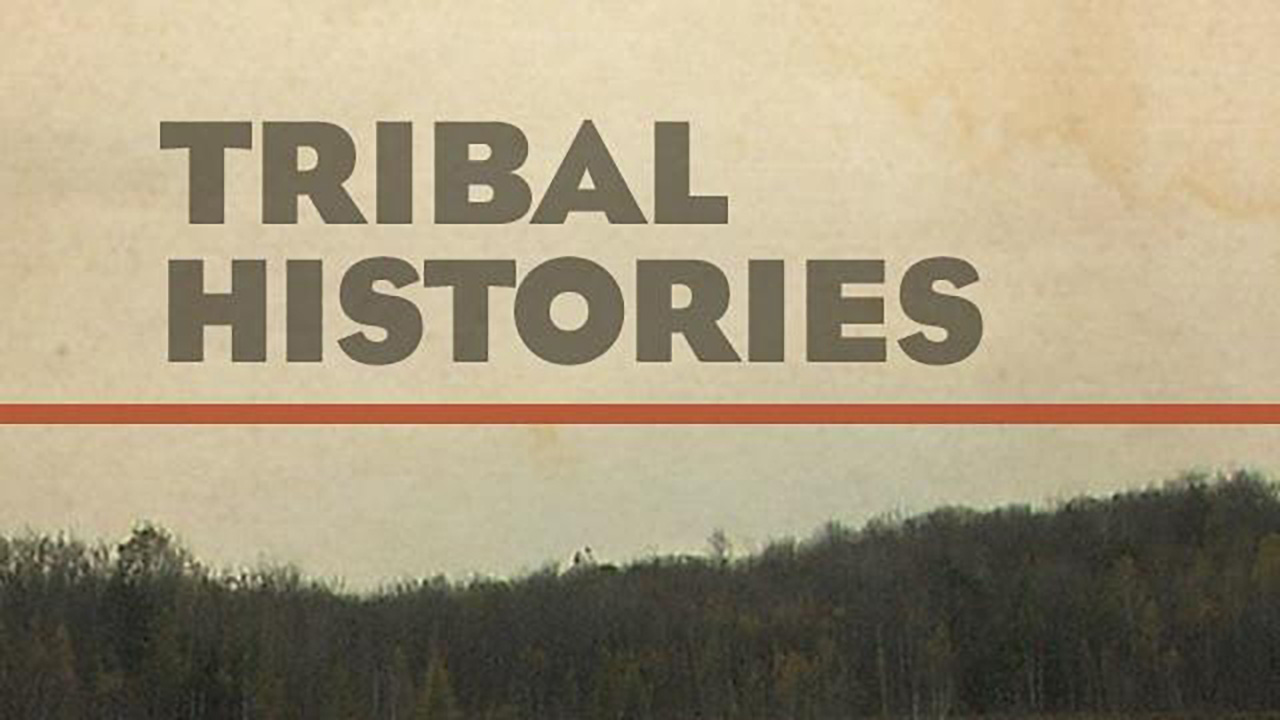





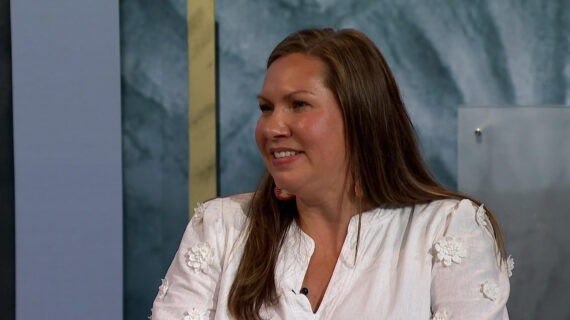

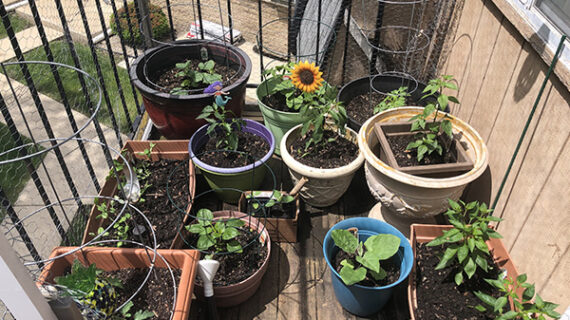
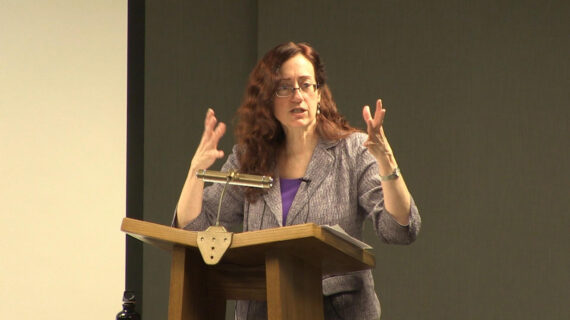
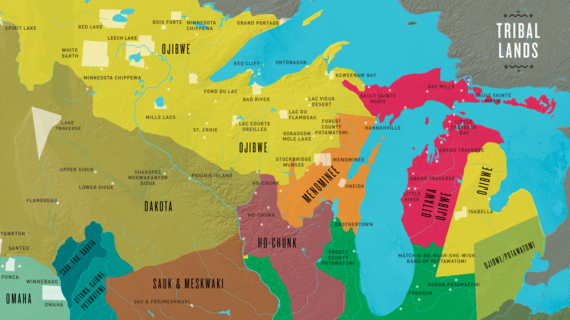
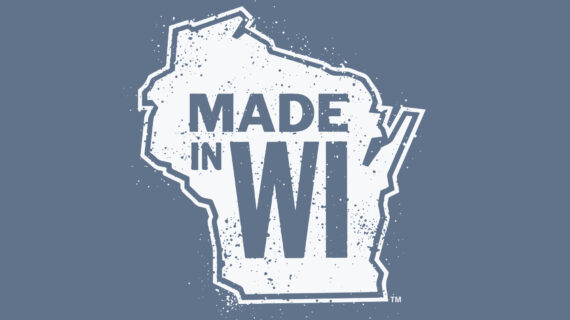

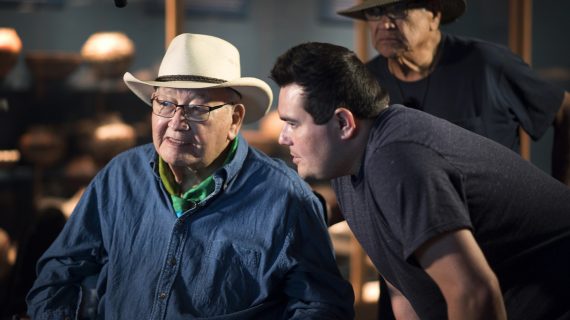


Follow Us